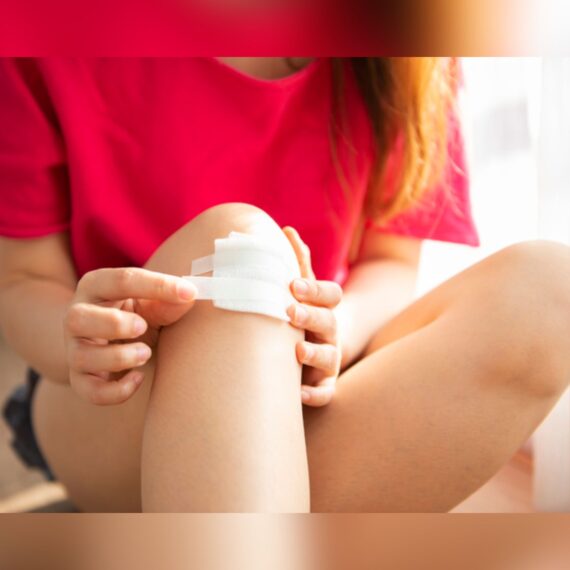Proper Wound Care is Essential for Healing
Wound care is an important aspect of medical treatment that helps wounds heal properly and prevent complications. Following the basic principles of wound care can help speed up the healing process and reduce the risk of infection or other issues. In this article, we will discuss the different types of wounds, stages of healing, dressing choices and other aspects of wound management.
Types of Wounds
There are different kinds of wounds that require specific treatment approaches. Some common types include:
– Abrasion: A scrape or graze of the top layer of skin. Abrasion wounds are shallow and bleed little.
– Laceration: A tear in the skin caused by a cut or slice. Lacerations can be deep and may need stitches.
– Incision: A clean cut made during a surgical procedure. These follow surgical guidelines to heal.
– Puncture: A wound caused by an object piercing the skin, like from a nail, needle or animal/human bite. These have a high risk of infection.
– Avulsion: When a sharp force tears a flap of skin off the body. Large avulsion wounds expose tissues below the skin.
The type of wound helps determine how it is cleaned, dressed and monitored during the healing phases. Proper identification is important for effective wound care.
Stages of Healing
Most wounds go through the following stages as they heal over time:
– Hemostasis: Bleeding is stopped and a fibrin clot forms to start repair within 24 hours.
– Inflammation: The body’s immune cells fight infection and clean debris within 3 days. Redness, swelling and heat occur.
– Proliferation: New skin, blood vessels and tissues begin growing within 4-21 days as the wound size decreases. Epithelial and subcutaneous tissues rebuild.
– Remodeling: Scar tissue strengthens and wound contracts over 3 weeks to 2 years. Remodeling improves strength but sometimes leaves discoloration.
Understanding these stages helps properly manage dressings, evaluate healing progress and determine when a wound may require further care.
Infection Prevention
One major goal of wound care is preventing infection that could disrupt or prolong the healing process. Some key infection prevention techniques include:
– Cleaning: Gently wash the wound edges and drainage with saline or antiseptic to remove debris and reduce bacteria.
– Debridement: Remove any dead, contaminated tissue from the wound bed during cleaning. This prevents infection harbor spots.
– Drying: Pat wounds mostly dry after cleaning so a moist environment doesn’t encourage bacteria growth.
– Dressing: Apply a sterile, absorbent dressing that creates a moist wound environment without being too wet.
– Monitoring: Watch for signs of infection like increased pain, swelling, odor or wound deterioration and contact a physician. Antibiotics may be needed.
Proper and consistent infection control methods are very important for wounds to heal withoutissues.
Dressing Options
Different dressing types are used during the various wound healing stages:
– Protective Coverings: Thin films, tapes or non-adherent pads protect wounds from friction during scabbing or new tissue growth.
– Absorbent Pads: Gauze, alginate, hydrofiber or foam pads soak up drainage without sticking to the wound. They absorb well but need frequent changes.
– Semi-Permeable Films: Transparent films maintain a moist wound environment while allowing visualization and breathing. They promote autolytic debridement.
– Advanced Wound Dressings: Hydrocolloids, hydrogels, alginate or antimicrobial dressings help manage drainage, fill dead space, release medications or stimulate healing of chronic or stalled wounds.
The right dressing type, application method, schedule and healthcare guidance optimizes each wound’s environment. Dressings must match active healing stages.
Nutrition and Lifestyle Factors
A person’s overall health and lifestyle impact how quickly wounds recover. Some factors within a person’s control include:
– Nutrition: A balanced diet with enough protein, vitamins C and A, zinc and calories supports the body’s natural healing abilities.
– Hydration: Drinking plenty of water keeps tissues moist and optimizes blood flow to deliver nutrients to healing areas.
– Smoking: Tobacco significantly inhibits healing by reducing circulation and increasing inflammation risk. Avoiding smoking benefits recovery.
– Stress: High stress puts extra demands on the body and can slow healing. Practicing relaxation techniques may help counter effects of elevated stress hormones.
– Exercise: Gentle mobility and flexing of the injured area enhances circulation without risk of reopening the wound. But rest is also needed during early healing phases.
Making positive lifestyle choices primes the body to heal itself from wounds as effectively as possible.
When to Seek Medical Advice
Most minor cuts and injuries do not require professional medical care and can heal with basic at-home wound management. However, certain signs indicate a wound may need evaluation or treatment:
– Bleeding that won’t stop after direct pressure for 10 minutes.
– Wound edges that are red, swollen or separating more than 24 hours after injury.
– Pus, increasing pain, foul odor or wound deterioration despite cleaning.
– Wounds over major joints, bones or deep into tissues.
– Wounds from animal/human bites, knives or other high-risk materials.
– Persistent wounds not improving over 2-3 weeks.
– Underlying health issues that could impact healing, like diabetes or vascular disease.
Knowing when wounds warrants a physician’s expertise speeds any needed care and prevents medical issues. With proper self-care and timely medical guidance, injuries have the best opportunity to heal optimally.
Wound care follows basic principles but also tailors treatment to the specific wound type, location and person. Understanding healing stages, infection risks, nutrition and lifestyle impacts enable individuals to manage wounds effectively and get help when needed. Proper wound care sets the body up for full recovery from injuries.
Note:
1. Source: Coherent Market Insights, Public sources, Desk research
2. We have leveraged AI tools to mine information and compile it

